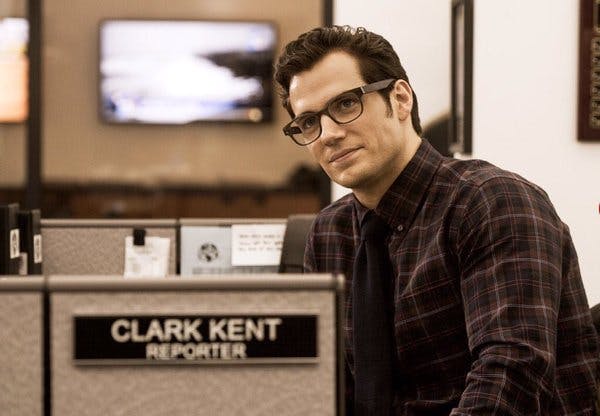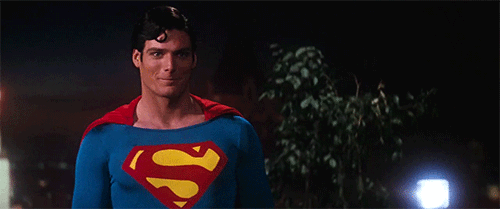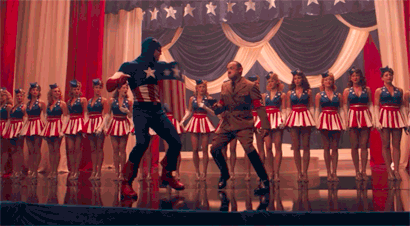Compared to the success of Christopher Nolan‘s Dark Knight trilogy, Hollywood has found it surprisingly hard to reboot Superman for modern audiences. Christian Bale’s Bruce Wayne fit smoothly into the trend for dark, morally conflicted action heroes, but when Man of Steel tried to follow suit, it was roundly criticized for its violent departure from Superman’s wholesome image.
In defense of Man of Steel, a lot of people do conflate “dark and gritty” with serious and respectable filmmaking. So hey, maybe some viewers would find it hard to accept a cheerful, primary-colored Superman saving cats out of trees while Ben Affleck‘s Batman punchs his own midlife crisis in the face. Luckily, we have a simple solution to this problem: Set the next Superman movie in the 1950s, where it belongs.
Obviously we don’t mean this with a sense of warm nostalgia for times gone by. For many people, life in 1950s America absolutely sucked. But for a number of reasons, the mid-20th century is the ideal setting for an authentic Superman movie.
1) Clark Kent’s journalism career
In a recent interview, Henry Cavill said that Batman v Superman will focus more on Clark Kent’s work as a reporter. This is a pretty intriguing detail, although we’re a little dubious about whether a Zack Snyder action movie can depict a plausible view of print journalism in 2016.
Superhero comics are full of newspaper journalists like Lois Lane and Peter Parker, whose careers are firmly rooted in the news industry of the 20th century. The result is that when modern adaptations try to revamp those characters, they either have to embrace the Buzzfeed revolution of new media (like Supergirl), or risk doing what Netflix‘s Daredevil did, and wind up with an anachronistic combination of old and new.
In Daredevil, investigative reporter Ben Urich wants to look into a salacious corruption story, but his editor discourages him in favor of less controversial reporting. Instead of taking the story to a Gawker-style blog (which, incidentally, would surely be searching to uncover Daredevil’s identity as well), he decides to post the information on a personal website where no one will ever find it. The result is a subplot that mostly follows the formula of classic journalism thrillers, but seems weirdly out-of-date.
https://twitter.com/CK1Blogs/status/711208617639333890
By setting Superman in the mid-2oth century, you can insert Lois and Clark into a His Girl Friday-style workplace romcom without risking a wildly unrealistic depiction of modern print media. Unlike Man of Steel, which ended with Clark getting a job as a stringer at the Daily Planet, though his only work experience seemed to be as a manual laborer.
2) Superman’s retro aesthetic
Following the runaway success of the Dark Knight trilogy, you can see why Warner Bros. wanted Man of Steel to look darker than previous Superman movies. Unfortunately for them, Superman isn’t Batman. He’s a Kansas farm boy, his costume was inspired by circus strongmen, and he’s literally powered by sunshine.
Thanks to shows like Supergirl and Legends of Tomorrow, we know that it’s possible to make a modern superhero adaptation with colorful costumes and a cheerful aesthetic. But given the restrictive mold for male action heroes, this might be a harder sell for Superman. Man of Steel felt the need to update his costume by removing the red underpants and downgrading the color scheme to a sedate navy blue, but ultimately, Superman is still a guy in a catsuit and a cape.
A Mad Men-era setting removes Superman from the “realistic” expectations of modern superhero movies, allowing for greater suspension of disbelief. Also, the architecture and design of 1950s Metropolis would go a long way to set Superman apart from the zillions of other comic book movies on the market.
3) Superman as an optimistic hero
Are optimistic, morally upstanding heroes boring? Our answer is obviously a resounding “no,” although Zack Snyder might argue otherwise. Either way, Superman’s brand of heroism doesn’t really gel with the current zeitgeist of Deadpool, Jessica Jones and Age of Ultron.
Fortunately, we already have a precedent for how a historical setting can bolster the idea of a pure-hearted, old-fashioned hero. Set in the 1940s, Captain America: The First Avenger combined a simple, accessible origin story with a surprisingly smart examination of Captain America as a WWII propaganda icon.
Alongside the latest reboot of the Spider-Man franchise, which is in danger of feeling dated, 1940s-era Captain America felt fresh and new. It allowed the filmmakers to embrace a philosophy that would seem hokey in the more cynical world of Robert Downey Jr.’s Iron Man, starring a hero whose key personality traits are determination and unwavering morality.
This isn’t to say you can’t have a Christopher Reeve-style Superman movie in 2016. But by shifting back to the mid-20th century, you’re returning to the period when Superman first captured the public’s imagination. Instead of trying to reshape Clark Kent as a post-9/11 action hero (which is presumably what happened with Man of Steel), you can explore his origin story on its own terms.
Photo via Action Comics #7





